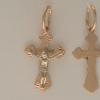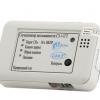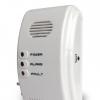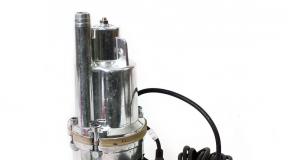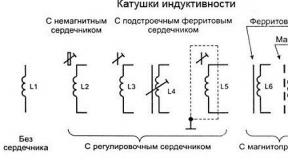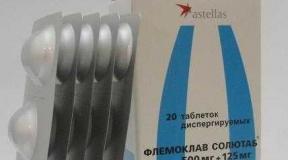Meizu whose firm. Meizu factory visit, management interview and new MX! Start of activity. MP3 players
Meizu became known to a wide range of domestic consumers only a few years ago, after their first Android smartphones appeared on the Russian market. However, the history of this Chinese electronics manufacturer began much earlier with the production of completely different devices.
History
Meizu was founded over a decade ago, in 2003, in the city of Zhuhai, located in the Chinese province of Guangdong. There are several versions regarding the translation of the company's name, but the official one says that "meizu" consists of two words: "mei", which means "a person in a trend", and "zu" - "a group of people". That is, in the literal translation "meizu" - "a group of people who keep their finger on the pulse of innovation."
The first devices of the brand were not Meizu phones at all, but MP3 players, which were in vogue in the early 2000s. In 2003, the company entered the market with the Meizu MX player, which had a standard rectangular shape, was equipped with a small blue-backlit LCD screen and 512 megabytes of flash memory. It is worth noting that this player was actually a 100% copy of the iAudio CW300 model from the Korean brand Cowon. Numerous accusations of plagiarism forced the company to reconsider its policy, and in the future, under the name Meizu, they began to produce exclusively original devices.
A landmark year for the company was 2006, when one of the first Chinese MP4 players, the Meizu MiniPlayer, was released to the market. The device was intended for playing music, viewing photos and videos, games. In addition, the player could be used as an e-book, radio, voice recorder and disk drive, which turned it into a universal multimedia center. At the same time, MiniPlayer had an undeniable advantage over the classic media centers of its time - it was compact and lightweight. It was thanks to this device that fans of modern electronics both throughout China and abroad learned about Meizu.
However, the period of popularity of MP3 players was short-lived, in the early second half of the 2000s they were gradually replaced by modern phones, which incorporated the functions of several devices, including audio players. The company's management quickly reacted to the changing market conditions and realized that starting to produce Meizu cell phones was the only way to survive in the new conditions.
Repurposing
The decision to reorganize the business was made in 2006, but before the time when everyone had the opportunity to buy a Meizu phone, two long years had to pass. Keeping in mind the bad experience with the first MP3 player, the management did not want to follow the path beaten by many Chinese manufacturers and engage in cloning gadgets of leading companies, and chose a more difficult path to success - to start developing their own smartphone.
Since the Meizu mobile phone was created from scratch, the company had to face a number of difficulties. One of them is the choice of an operating system and its adaptation to the needs of potential consumers. As a result, it was decided to use the Windows CE OS, the interface of which the developers completely redesigned. The opportunity to buy Meizu smartphones from consumers appeared in 2008, it was then that the first phone of this brand, the M8, was released. Despite a number of shortcomings, the device has become quite popular among Chinese users.
However, the real success came to the company after they began to produce Meizu smartphones running the proprietary Flyme operating system, based on Android. At the very beginning of 2012, a smartphone entered the market, which received the same name as the company's first MP3 player - MX. With its appearance, the brand name became really widely known all over the world, and reviews of this model were published on the largest global resources, including Engadget, Phonearena, Slashgear and others.
But, most importantly, Meizu smartphones received extremely positive reviews from buyers. As the company's management has repeatedly stated, it is the focus on customer needs, and not the pursuit of outstanding performance, that is Meizu's top priority.
Staff
A key to the company's success belongs to a man most people know as Jack Wong, although his real name is Huang Zhang. He is the founder, leader, inspirer and chief designer. And it was his ideas, dedication and desire to prove that the manufacturing country Meizu, China, can produce high-quality gadgets, which eventually made it possible to achieve recognition from buyers in many countries of the world.
Availability
To date, Chinese Meizu phones can be officially purchased in Hong Kong, Israel, Russia and Ukraine. The total number of employees of the company exceeds 1000 people, and the number of retail outlets is more than 600.
However, the company is not going to stop there. In an effort to keep up with the times, the management announced that fans of the brand will soon be able to purchase a Meizu tablet. Like smartphones from the current line of the brand, Meizu tablet will run the proprietary Flyme OS.
History
She started her work in 2003 . Its first models were Meizu X6 and Meizu E3. In Russia, they were little known, although they were sold not under foreign brands, but under a brand name. Now the players of this company can be found in almost any electronic equipment store.
In August 2005, the company changed the logo, which is still printed on every box with Meizu appliances to this day.
After a good start in sales, Meizu in 2006 introduced the first representative of the M series - Meizu miniPlayer M6 (Powerman XL-850). It was a standalone product, it did not look like other players (usually Chinese manufacturers copied the design of other well-known companies when creating their devices). The player was not deprived of multimedia functions, it could: play videos, view pictures in a fairly high resolution, read e-books, catch radio frequencies, record sound, and also play lossless formats. Firmware was constantly released to it, which meant that the manufacturer supported its products and eliminated errors in the software. The player had good sound quality, low price and was quite popular.
A year later, the company introduced the Meizu M3 (Ritmix rf-7400), a smaller version of the Meizu M6. In principle, it had the same functionality and differed only in a smaller display and size.
At the end of 2007, the Meizu M6sl (Ritmix rf-9200) was released, a copy of the M6, but in a thinner case and with slightly changed controls.
These players were quite popular and in demand at one time, because they were relatively inexpensive and had high sound quality.
In early 2009, MEIZU entered the domestic market with its new development - the Meizu M8 touch phone. It is a touchscreen phone with an independent MyMobile OS operating system based on the Windows CE 6.0 kernel. This product was in very high demand in China. About 50,000 devices were sold per month. In 2010, Apple demanded that the production and sale of the M8 be curtailed due to too much similarity with the iPhone. Because of this, the release of the new Meizu M9 touch phone was also postponed to the end of 2010.
On January 1, 2011, the Meizu M9 went on sale in China. This touch phone uses its own FlymeOS operating environment (which was originally based on Google's Android 2.3.5 OS, but has now been updated to Android 4.0.3), has a 1 Ghz Samsung Hummingbird processor (also used in the Samsung Galaxy S smartphone), 512 mb RAM and is equipped with a Sharp display with a resolution of 960x640. A distinctive feature of this smartphone is the presence of stereo speakers spaced on the sides at the bottom of the case.
January 1, 2012 Meizu MX went on sale in China. This smartphone also uses FlymeOS on the Android 4.0.3 kernel and was originally built on a dual-core Samsung Exynos 4210 processor with a frequency of 1400 MHz. In the summer of 2012, an updated version of the smartphone was released with a Samsung Exynos 4212 processor with a frequency of 1500 MHz and an increased battery capacity from 1600 mAh to 1700 mAh. Then, in the summer of 2012, sales of the quad-core version of the MX started in China, which differed in the processor version - Samsung Exynos 4412 with a frequency of 1400 MHz and internal memory (32 and 64 GB). Currently, the Meizu MX smartphone is sold in the following versions: Meizu MX 2-core 16Gb, Meizu MX 4-core 32Gb and Meizu MX 4-core 64Gb.
In Russia, official sales of the Meizu MX (PCT) smartphone began on May 22, 2012 with a dual-core version. The quad-core version went on official sale in Russia in October 2012. Official distributor - MyMeizu.ru
Currently, MEIZU is working on a new model under the index M040 (commercial name - MX2), which should go on sale in China on January 1, 2013, and later, in January, in Hong Kong and Russia. This model will have 2GB of RAM and a 4.4" HD screen.
Products
Meizu E3 - mp3 player
Meizu X6 - mp3 player
Meizu M6 Mini Player - mp4 player
Meizu M3 Music Card - mp3 player
Meizu M6SL - mp4 player
Meizu M8 - WinCE Smartphone
Meizu M9 - Android smartphone
Meizu MX - Android smartphone
Meizu MX 4-Core - Android smartphone
Meizu MX2 (2013) - Android smartphone
Notes
Links
- Lasterlar Meizu MX (PCT) review: something new (Russian). EnjoyIT EN. Archived from the original on May 15, 2012.
- Lasterlar(Russian). EnjoyIT EN. Archived
- (Russian). gagadget.com. Archived from the original on March 16, 2012.
The modern buyer makes quite serious demands on the quality of the products that he is offered to buy. And it is quite difficult for newcomers to find their niche among a large number of manufacturers. In addition, Russian users are quite biased towards goods from China, initially attributing them to poor quality.
As you know, Meizu smartphones are often difficult to find in regular hardware stores (although there may be exceptions), but they can be easily ordered online. However, is it necessary? How can you buy a mobile phone without checking it yourself? In addition, the Meizu brand itself cannot be called too popular and advertised, and it is quite logical that potential buyers begin to doubt the quality of the products of this manufacturer.
A couple of years ago, few people knew who Meizu was, but now the products of this manufacturer fill the Russian market quite quickly - more than 70 million smartphones have already been produced and sold in Russia. Many buyers have already managed to evaluate all the advantages of Meizu mobile phones and with full confidence recommend them to their friends and acquaintances.

As you know, Meizu is a company that always sticks to the golden mean. The founder of the company believes that qualitative progress is more important than rapid advancement. As a result, by 2013, this manufacturer entered the top 10 mobile device manufacturers in China.
In this article, we will find out what country Meizu is manufacturing, find out the history of the company, and learn many interesting Meizu facts about the company.
Meizu is traditionally associated with the name of Jack Wong - this is the chairman, founder and current CEO. He is the main inspirer and soul of the company, although most often he remains in the background, not speaking anywhere and not giving interviews. However, Jack Wong is not a real name, but a pseudonym that he signs on the Meizu official website, expressing his opinion on a particular issue. His real name is Huang Zhang, and he always closely monitors every process in the company, while not interfering with the process itself.

The vice president of Meizu speaks of the founder of the brand as a person with a special love for the world of electronics, who is able to spend weeks and months testing a new device right at home, and then make a proposal for any cardinal change in the appearance of the Meizu phone. He even redid the walls and ceiling in his house to improve the acoustics in the room. Most of the leaders of large enterprises most often think only about income, but Wong has a passion for the details of the production of each Meizu smartphone.
Founding history
The history of Meizu is very interesting. The first product of the company was by no means a smartphone, but an Mp3 player called Meizu MX. The product got a pretty good start and sold well, but in fact it was a copy of the then-famous iAudio CW300 player from Cowon. As a result, the owner of Meizu prudently changes the strategy of work, designates a new vector of work and risks betting on the originality of products, as a result, he creates a new product - the Mp4 Meizu Mini Player, which is unique with its nice design and thoughtful interface.

In addition to playing music, you can also read e-books, play videos, watch pictures and even record sounds on a voice recorder. With all this, Meizu regularly released firmware updates and eliminated all errors in the software in time. As a result, it was thanks to this player that the world started talking about the company.
However, the rapidly and actively developing market for mobile devices gave the company an impetus to change its line of business. They understood that they needed to quickly respond to market changes, which meant that it was time to start making smartphones. As a result, in mid-April 2007, Meizu launched its first smartphone, the M8. He hooked the consumer, first of all, with a very affordable price, a large display size and pretty good performance. The gadget had a touch screen with a diagonal of 3.4”, 256 MB of RAM and worked on the basis of the MyMobile operating system (from Windows).

Outwardly, the gadget was very reminiscent of the iPhone, and at some point Apple even managed to suspend sales of the M8, but the story of Meizu did not end there and the company's phones have already received their loyal admirers. And so began the formation of Meizu in the smartphone market.
Peculiarities
Meizu has managed to successfully combine the latest advanced developments in the world of technology with great design in its gadgets in a short period of time, while offering it all to the consumer at a relatively low price. Meizu phones combine three factors at once:
- Build quality;
- Multifunctionality;
- Performance.

But due to the fact that competition in this market is growing, the Meizu company is simply obliged to introduce new chips and solutions in each new device, and I would like to note that they cope with this task with a bang. Almost all phone models are different in characteristics and allow the user to choose a gadget for every taste and color. In addition, often the main factor when buying is its affordable price, which Meizu also succeeded in. The main features of the phones are:
- A good steel bearing frame in the body of the device, as a result of which its impact resistance is greatly increased.
- A touch button that has many functions and even a fingerprint scanner, which minimizes the number of additional buttons.
- Flyme branded graphical shell, which combines the most successful features of the main current operating systems for smartphones, which appeared back in 2012 based on the Android OS.

As soon as the function of protecting data with a graphic, digital password or pin code appeared on smartphones, many gadget owners began to actively use it. This is a fairly reliable way to keep personal information to yourself, since there is always a chance that someone curious will get into the phone, or it will be stolen, and bank card data and other important information will fall into the hands of attackers.
However, there are also disadvantages - for example, a smartphone can fall into the hands of a child and be blocked, or the owner will simply forget his password. Some people start to panic right away, run to service centers and pay crazy money for the simplest procedure that they can do on their own without any difficulties, but any average user can reset the password on a Meizu phone.

We all know that Meizu smartphones are really good devices that have their own features and chips, which is why they have gained such popularity. Would you like to know some interesting facts about the history of the company?
- The name Meizu itself consists of 2 words: Mei, which means "to be in trend", and "Zu", which translates as "company, group of people." If translated literally, the name "Meizu" can be deciphered as "people in the trend."
- The first smartphone from Meizu (M8) was originally based on the Windows CE operating system, but at that time the interface was weak, and the OS itself was too difficult and illogical for the average user. Then the developers decided to use only the OS base, and develop programs and a graphical shell on their own. Over time, the Android OS began to gain immense popularity, and therefore the Meizu phone company made a choice in its favor - and the Flyme operating system appeared.

- Back in 2014, Meizu made a sensational statement: any developer who released an application for Meizu will receive 100% of the profit from it! A very good and reasonable scheme, the purpose of which was to maximize the list of programs that are released specifically for these smartphones.
- From the beginning of the foundation and until now, the main criterion for hiring in the company is to be a dreamer. Huang Zhang selects for cooperation only those people who are able to get carried away with their work and create not just a good, but a great product.
- Two years ago, more precisely in 2015, Alibaba Group invested almost 6 hundred million dollars in Meizu in order to promote its own cloud called Aliyun. MediaTek also invested in this smartphone manufacturer, which thus decided to respond to Xiomi, who decided to switch to chips from Qualcomm. Thanks to these, 4 new smartphones have seen the light and more are being released.

Product line
Consider the most popular smartphone models that Meizu has introduced to date.
Meizu MX. This is a moderately balanced in terms of functions, a fairly simple, reliable and most well-thought-out smartphone, which quickly gained popularity and eventually became a flagship. Many additional built-in features allow the user not to think about searching for the right programs on the Internet. It is also the first smartphone from Meizu, in which the capabilities of the touch key have been significantly expanded.

As for the technical characteristics - the device is assembled at the highest level. Large screen, nice and sophisticated design, smart camera and decent sound, coupled with good autonomy. Yes, and the price can not but please.
Meizu MX4 / MX4 Pro. These are two smartphones that are completely different from each other. The Pro version has a better display resolution and runs on a different chipset. In addition, a key with a fingerprint scanner appeared here, which gained immense popularity. Both smartphones have a sufficient amount of RAM, and the resolution of the front camera has become higher.

Meizu M5X/M6X. These smartphones have received new features and have been improved in terms of technical characteristics. The 6th model received the largest number of rave reviews from users in Russia and as a result became the best model from Meizu for the previous year.

Meizu M3. This gadget received the title of the best-selling smartphone in the world from the Meizu catalog for 16-17 years, and in Russia it even entered the Top 3 of the best. This model is based on Android1, has a display of 5.5 ”(1920 × 1080 pixels) with bulk glass and an oleophobic layer. The main camera has a resolution of 13 megapixels, front - 5 megapixels, built-in memory - 32 GB, RAM - 3 GB.

Development prospects
Meizu is preparing a more active expansion in the world. If you look at the progress of the company in recent years, then the numbers cannot but surprise: in 2015, almost 20 million smartphones were sold, which is 350% more than in the previous year! Meise did not manage with smartphones alone - the release of VR glasses, PowerBank portable batteries and a headset started. In addition, the company is developing new models of fitness trackers and smartwatches.
Wong's ambitions are real and justified - he previously reported that in 2017 he plans to increase sales of Meizu smartphones to 25 million copies.
Although Meizu is relatively young, it already has great growth potential. Their products stand out not only for their impeccable design and high quality of components, but also for a very favorable price. This will invariably lead the company to a leading position in the global market.
: mei zu) is an international company that produces digital electronic devices.
Founding history
The history of the company is strongly associated with a man named Huang Xiuzhang, better known by the pseudonym "Jack Wong". It is he who is the founder, ideological inspirer and head of the company. The idea of creating his own company came to him back in 1998, at a time when he was developing and selling OEM devices.
Huang Xiuzhang has always been a technology enthusiast, keeping a close eye on all the new products and paying special attention to music players and high-quality sound. At some point, he realized that he could not find an mp3 player that would suit him in all respects at once, and decided to develop it himself, founding his own company for this.
The name Meizu consists of two parts: Mei - a person who is "in trend", interested in new technologies, Zu - a group of people. In fact, literally Meizu can be translated as "a group of geeks." Initially, MP3 players were chosen as the main activity, and only a few years later the focus shifted towards smartphones. Despite the fact that the company was officially founded back in 1998, the start of the first serious production falls on 2003, there are practically no mentions of the company before this period.
Since the founding of Meizu and to this day, Huang Xiuzhang has closely followed everything that happens in the company. At the same time, he tries to interfere directly in her affairs as rarely as possible, and prefers communication on the Meizu forum to public speaking and official interviews. Meizu CEO Bai Yongxiang describes him as follows: "He is a real mentor: he rarely interferes, but he always watches what is happening."
Portable players, 2003 - 2007
The company's first product was the Meizu MX mp3 player, released in 2003. In fact, the player was almost a complete copy of the Cowon iAudio CW300 and, despite good characteristics (512 MB flash memory, LCD display) and sound quality, even in the home market it was received very ambiguously.
The lack of any resounding success of the first model was an occasion for Meizu to completely rethink its strategy. The company decided to abandon the idea of completely copying existing devices on the market and focus on developing their own solutions. Introduced in 2004, the Meizu ME player was an original development, had a number of interesting features (original design, joystick-based control unit, etc.) and was accepted by customers much more favorably.
Meizu ME has become a landmark product for Meizu and served as a starting point for further development. Over the next year, the company released several more different players that were a further development of the Meizu ME ideas.
The next major step forward for the company was the Meizu E5 player released in the spring of 2005. First of all, the product turned out to be very interesting from a technical point of view - for the first time for Meizu devices, it had support for FM radio, an alarm clock and the ability to read texts from the screen (up to 6 lines of text were placed on the display). The control unit has also been heavily redesigned, instead of the joystick familiar from previous models, it has a rotating wheel with a key located in the center.
By this time, the company has significantly strengthened its position in its home market and decided to go beyond China. Meizu X6 became the first player, which was also oriented to foreign markets. From classic Meizu players, he took a control unit with a branded joystick, from Meizu E5 - a number of additional features such as FM radio support. The main distinguishing feature of the Meizu X6 is an unusual design with a bright blue backlight around the perimeter of the joystick and an OLED screen.
The first truly high-profile achievement of Meizu was the Meizu E3, which was released in August 2005. Its main advantage was high-quality sound, which was achieved through the use of the Philips Nexperia PNX0102 chip. In China, the player was highly appreciated by customers and became one of the most popular solutions of the time.
The success of Meizu E3 has become an impetus for further development for the company. A year later, she managed to break her own record and become one of the pioneers of the MP4 player market.
In May 2006, the Meizu MiniPlayer (M6) was introduced, which became a landmark model not only for Meizu, but for the entire portable player market as a whole. With MP4 video support and a large LCD display (2.4" diagonal, 320x240 resolution), MiniPlayer became not just a music player, but a versatile multimedia device and one of the most famous MP4 players of that period. He not only further strengthened the company's position in the home market, but also provided it with international recognition. This is evidenced by a number of clone models released under other brands. An example is the Powerman XL-850, which is the equivalent of the Meizu M6, or the Ritmix RF-9200, which is the Meizu m6sl.
Of the subsequent Meizu players, it is worth noting the Meizu Musiccard (M3), which became a kind of response to the Apple iPod Nano. The device was released in March 2007 and, although somewhat reminiscent of the iPod in design, had a number of interesting features. First of all, they should include a proprietary control system and support for formats rare for players of that time like WMA Losless, Flac and APE. In Russia, this model is known as Ritmix RF-7400
Smartphones, 2008 - present
By 2007, Meizu realized that hard times were coming for the portable player market and that smartphones would gradually replace them. In the same year, the development of the company's first smartphone called Meizu M8 begins.
Smartphones running Windows CE
In February 2009, the Meizu M8 was officially announced. The smartphone ran Windows CE 6.0, but had a significantly redesigned interface. The changes affected almost everything, from desktops to basic applications. At the same time, the external design of the smartphone almost completely copied the Apple iPhone. Under pressure from Apple, the production of the smartphone was discontinued on October 9, 2010. At the same time, the company continues to work hard on the successor to the Meizu M8.
Smartphones running Android
In January 2011, the company's next smartphone was announced - Meizu M9. This is the first Meizu smartphone that runs on Android. The smartphone's interface has been heavily redesigned again, and it is Flyme's proprietary shell, which combines the ideas of Android and iOS, that has become a hallmark of the device. Externally, the smartphone still resembles the iPhone, has similar dimensions and the same display resolution.
In the same year, Meizu opens its branches first in Hong Kong, then in Russia. Around the same time, the founder of the company, Huang Xiuzhang, began to gradually move away from business issues, deciding to focus on device design and branded shell. He gradually shifts all the routine affairs of managing the company onto the shoulders of Bai Yongxiang.
In subsequent years, the company begins to gradually move away from the design of Apple smartphones, developing its own corporate identity. So, the very next year, Meizu MX2 came out, which received a screen aspect ratio different from the iPhone and a new back cover design (a special two-layer plastic was used in its manufacture).
Until 2014, Meizu is trying to release one flagship device per year, without being distracted by the development of budget models. Sometimes additional versions are added to them on new platforms, as an example, Meizu MX 4-core, which has become an improved version of Meizu MX.
In February 2015, the Chinese company Alibaba Group invests $590 million in Meizu, and the Chinese manufacturer's lineup is significantly increased: the budget M-series appears, which includes compact devices (M1 Mini) and phablets (M1 Note), later musical flagships from the Pro line.
On August 23, 2017, Meizu introduced its first smartphone based on a processor from Qualcomm - Meizu M6 Note.
In recent years, the lineup has replenished with several lines of smartphones at once, but Meizu still strives to provide a unified user experience on all Android devices. First of all, this is achieved through a single proprietary shell on all smartphones - Flyme OS.
Flyme OS is constantly evolving and improving, but the main features of the proprietary shell have remained unchanged all these years. The main emphasis in Meizu was made on the convenience of everyday work and an intuitive interface, trying to get rid of additional submenus and lists of secondary options. In particular, in Flyme OS there is no application menu familiar to Android, and all program shortcuts are placed directly on desktops, as in iOS.
Due to the fact that initially Meizu released one flagship per year, they all received support and updates to the latest versions of Android for quite a long time.
Smartphones running other operating systems
Despite the commitment to Android and the emphasis on its own proprietary shell, Meizu is not at all alien to experimentation. From time to time, the company releases special versions of its smartphones on operating systems other than Android.
On October 20, 2014, a special version of the Meizu MX4 smartphone on the YunOS platform was presented. According to unofficial information, a version of Meizu MX4 based on CyanogenMod was being developed at the same time, but in the end this smartphone was never presented.
In March 2015, another version of this smartphone was announced, this time running Ubuntu Touch OS. In February 2016, it was joined by the Meizu PRO 5 Ubuntu Edition smartphone, which also runs on Ubuntu Touch OS.
Smartphones
- Meizu Metal
- Meizu M1
- Meizu M1
- Meizu M2
- Meizu M2
- Meizu M3
- Meizu M3s
- Meizu M3
- Meizu M3E
- Meizu M3 Max
- Meizu M3X
- Meizu M5
- Meizu M5s
- Meizu M5c
- Meizu M5 Note
- Meizu M6
- Meizu M8
- Meizu MX
- Meizu MX3
- Meizu MX4 Pro
- Meizu MX5
- Meizu MX5e
- Meizu MX6
- Meizu Pro 5
- Meizu Pro 6
- Meizu Pro 6s
- Meizu Pro 6 Plus
- Meizu Pro 7
- Meizu Pro 7 Plus
- Meizu U10
- Meizu U20
Players
- Meizu E2
- Meizu E5
- Meizu E3
- Meizu E3C
- Meizu ME V6
- Meizu ME V6S
- Meizu ME V7
- Meizu MI V6
- Meizu MI V6S
- Meizu MI V7
- Meizu MX
- Meizu M3
- Meizu M6TS
- Meizu M6TP
- Meizu M6SP
- Meizu M6 SL
- Meizu X2
- Meizu X3
- Meizu X6
Operating system
- flymeOS
Wearable electronics
In August 2016, the Meizu Mix smart watch was announced. The gadget is equipped with a round metal dial with a diameter of 42 mm and durable sapphire crystal. Unlike other similar devices, Meizu Mix does not have a display, and "smart" functions are built right into the mechanical watch. The device collects information about the user's physical activity and can notify you of messages received on the phone or missed calls. The start of production is scheduled for September 2016. Users will be able to choose from three strap options - denim, leather or metal, priced at 999 yuan (about 9,600 rubles), 1,299 yuan (12,500 rubles) and 1,499 yuan (14,400 rubles) respectively.
Gadget manufacturers
Meizu is known for always sticking to the "golden mean". She never depended on investments, and therefore could not be afraid of global failure, but she also could not achieve dizzying success. However, the CEO of the company believes that moving forward is much more important than moving fast. In addition, thanks to the creativity Meizu is a unique brand whose mobile devices will be appreciated by a wide variety of consumers. By 2013, they were able to enter the top ten smartphone manufacturers in China.The name of the Chinese company is associated with the name of its founder, chairman and current CEO, Jack Wong. It is the soul of every product of the company, although in fact it always remains “behind the scenes”.
Jack never gives interviews and does not speak publicly anywhere. In fact, Wong is a pseudonym on behalf of which he voices his opinion in the only way he sees fit to do this - from the Meizu website.
The real name of the founder is Huang Zhang. However, he is known specifically as Jack Wong. Huang Zhang always carefully monitors everything that happens in his company, but almost never interferes in the process itself.
Meizu's senior vice president describes Wong as a music lover with an innate passion for electronic devices. Huang Zhang can spend months testing the company's new device at home, and then come up with the idea of any drastic design changes.
Even in his own home, Jack Wong completely redid the ceiling and walls - all just to improve the acoustics.
Most directors and owners of successful companies are primarily interested in generating income, but the founder of Meizu is most focused on details. It is for them that he has a real passion.

Meizu was founded in 2003. From the very beginning, she has been working on the creation of MP3 players, and within three years has become the most famous MP3 brand in China. At that time, there was an increased demand for such devices.
It is noteworthy that even then the company did not have any sponsors at all - it was entirely dependent on Wong's income. The very first player released by Meizu was the MX (just like one of the smartphones was later named).
He became a fairly successful invention, but the real success was yet to come. By 2006, the company becomes one of the leading MP3 player manufacturers in the Chinese market.
Their devices differed from all others with a seamless body and a touch screen (at that time these characteristics were not very common). Of course, the Meizu player could not compete with the iPod, but in China it became the leader in sales.
Unfortunately, the conquered market niche was not destined to remain this way forever, because in the same year the largest technology manufacturers begin to produce "smart" mobile phones. The era of MP3 players was coming to an end, and they were to be replaced by smartphones with rich multimedia capabilities.
The very first invention of the company was predetermined by the fact that its founder was and remains an avid music lover with a passion for electronic gadgets.
However, now the following fact became more and more obvious: it is the mobile device that everyone needs, and it will never go out of fashion, unlike the player. Moreover, listening to music from smartphones is still more convenient. So, the future was for them.
In 2007, Meizu releases a musical postcard, and the very next year it enters the mobile device market. The first generation smartphones were introduced in the winter of 2009, and it all started with the M8 model, which became the debut.

Two years later, the M9 will appear, and in 2012, the MX. The company's business philosophy has focused on developing innovative and user-friendly smartphones for consumers. Gradually, she built a global network of presence in other countries.
In 2011, a branch was established in Hong Kong, which took up the study of the global market. Some time will pass, and the company will become popular in Israel, Russia and so on.
The M8 mobile device was a multimedia smartphone capable of surfing the Internet. Many people called it the “Chinese iPhone”, comparing it with a smartphone from (there were some similarities, for example, in design and graphical interface).
Surely it was because of this similarity that the M8 was noticed in the United States. Initially, two versions of the smartphone were announced: an entry-level version without a camera, and a standard version. Anyway, only the standard variant was released. True, the release was delayed several times due to the device's inconsistency with Chinese cell phone regulations.
By the way, Jack Wong announced the release of the M8 four days after the iPhone was called its direct competitor. This device was provided with support for Wi-Fi and GPRS.
The ambient light sensor allowed the phone to automatically adjust the brightness of the screen according to the ambient light level. The screen orientation could also be adjusted automatically.
In the fall of 2010, it was reported that Meizu stopped production of the M8 due to pressure from the intellectual property departments and Apple (the case was the similarity of the device with the iPhone).
I must say that Apple even looked for ways to ban all sales of the smartphone, which could well have ended with Meizu's bankruptcy due to unsold stocks, but these words were never officially confirmed.

Before the advent of Android, Jack Wong chose between several platforms - Win CE, Windows Mobile and Linux. The not so good user interface of Windows Mobile was the main reason why the president of the company refused to use Windows Mobile.
The amount of fees from each device running WM was also considerable. As for Win CE, it was not a complete mobile platform, and even worse - it did not have a Wi-Fi module, and there was no full-fledged interface.
The next problem Wong faced was the touch screen. The company began to cooperate with Quantum, but the very first samples of such screens revealed many shortcomings (lack of precise touch, unfinished linear function, etc.), from which it was concluded that it was too early to release devices.
It was the most difficult time in the history of Meizu. The problem was solved after the release of the M8, however, as already mentioned, production had to be stopped. In addition, many buyers were dissatisfied with the quality of the goods.
The company had to make concessions and promise to exchange a low-quality phone for high-quality products. Fortunately, the successful sales of the previous device, that is, the MP3 player, allowed Meizu to do this.
By the beginning of 2011, the company released the M9 smartphone running Android. It was the first Chinese "smart" phone with a Retina display and a 1 GHz processor. In the same year, it became one of the most popular Android smartphones.
The mobile device was equipped with 8-16 gigabytes of built-in flash memory, a 5 megapixel main camera and a capacitive touch screen that surpassed the screens of all previous devices of the company.
In addition, the phone had support for Bluetooth and Wi-Fi, as well as TV-out. The new processor made it possible to view Full HD video from the M9. An English version of the software was also provided.

It should be noted that the queue for the first M9 devices was lined up since the night. On the very first day, only 300 copies were produced. The release of the smartphone was also preceded by several delays.
The first of these was caused by the fact that the company decided to change its approach to using the logo. The second delay occurred already in the process of checking the device by the Chinese Academy of Telecommunication Research.
The third was related to the import of the iPhone 4 to China. Well, since the Meizu company wanted to compete with Apple, it used the same Retina display as the "apple" smartphone.
The M9 smartphone was very fast thanks to its processor and supporting hardware. The manufacturer equipped it with 512 megabytes of RAM. This device was very similar to the iPhone 4.
Both smartphones turned out to have similar processors and “stuffing”. Thanks to the improved pixel density (326 ppi), it was very convenient for the user to read text, zoom in the browser, play games and so on.
The interface of the device was developed by the Chinese company Eico. This firm was famous for its good reputation in the field of design, as well as successful experience of cooperation with, Google and other brands.
It was she who developed a unique user interface for Meizu. Many smartphone owners have started to import this interface into their devices. Own applications have also been developed.

Meizu M9 had three physical buttons below the screen. Unlike many other devices like the iPhone, the keyboard did not rotate to landscape mode when reorienting the smartphone.
Also, the M9 easily switched from Chinese to English and vice versa by simply pressing the "EN" and "CH" buttons, respectively. Among the shortcomings, it was possible to single out the fact that the front camera sensor did not respond well to light. The sound quality was also not very high.
The battery life of the M9 was not too different from most smartphones of the time. With standard use and a full charge, the smartphone could be used for up to 24 hours, and with minimal use - 48 hours. There is also an opinion that updating the version of Android can extend the life of the device.
If the potential buyer is not located in China, getting access to the M9 can be a very difficult task. The best way to purchase a smartphone is to go to an online retailer.
The disadvantage of this method is the lack of a guarantee. In addition, there is a risk of encountering an unscrupulous seller. Be that as it may, the M9 model has become very popular in China and has earned universal recognition.
In early 2012, Meizu launched the MX, a device running the Flyme operating system. This device was the first mobile device released outside of mainland China.
The manufacturer equipped the smartphone with a 4-core processor, an 8-megapixel camera and the ability to shoot video in 1080p format. It was launched in Hong Kong and the Chinese mainland at the same time.
The MX is the company's second Android device. A model equipped with a 2-core processor was also provided.

The MX2 model appeared at the end of 2012. It was running Android and Flyme. The device was manufactured by Foxconn and went on sale in China, Russia, Israel and Hong Kong.
It became available with various amounts of internal memory (from 16 to 64 gigabytes). It was also provided with 2 gigabytes of RAM and a battery with a capacity of 1800 mAh.
MX3 came out in 2013. It was the company's first smartphone with 128 gigabytes of internal memory. Other parameters included a 5.1-inch display, a 2400 mAh battery, an 8-megapixel main camera, and a 2-megapixel front camera.
In the fall of 2014, the release of the latest mobile device was announced. The model was called MX4, as well as a 2.2 GHz processor, support for LTE networks, a display diagonal of 5.36 inches, 2 gigabytes of RAM, 16-64 gigabytes of internal memory, a main camera of 20.7 megapixels, a front camera for 2 megapixels and a 3100 mAh battery.
The MX4 was said to be like "a budget version of the iPhone 6 Plus with big ambitions." The price of the device was indeed attractive.

The company's smartphones in the MX line are running a customized version of the Android system, called Flyme. The Flyme platform was developed by Meizu.
It was also announced that the company is going to be one of two firms planning to launch the first Ubuntu phones.
In addition to Jack Wong, other notable Meizu executives include Aber-Bai and Nana Lee. The first of them is the chief executive officer and senior vice president of the company.
Bai has extensive experience in R&D and equipment manufacturing. He specializes in screens and antennas and holds several patents in this area.
It was thanks to his efforts that many Meizu smartphones saw the light of day and subsequently managed to become real bestsellers. He also helped the company double its revenue in the past three years.
Bai joined Meizu in 2003 as a member of the founding team. As for Lee, he is the Vice President of Sales and Marketing. Joined the company in 2012 and managed to expand the mobile business.
Participated in the production of MX2 and MX3 smartphones. Previously worked as a manager at Monstar-Lab. Lee pays special attention to the Internet industry.





